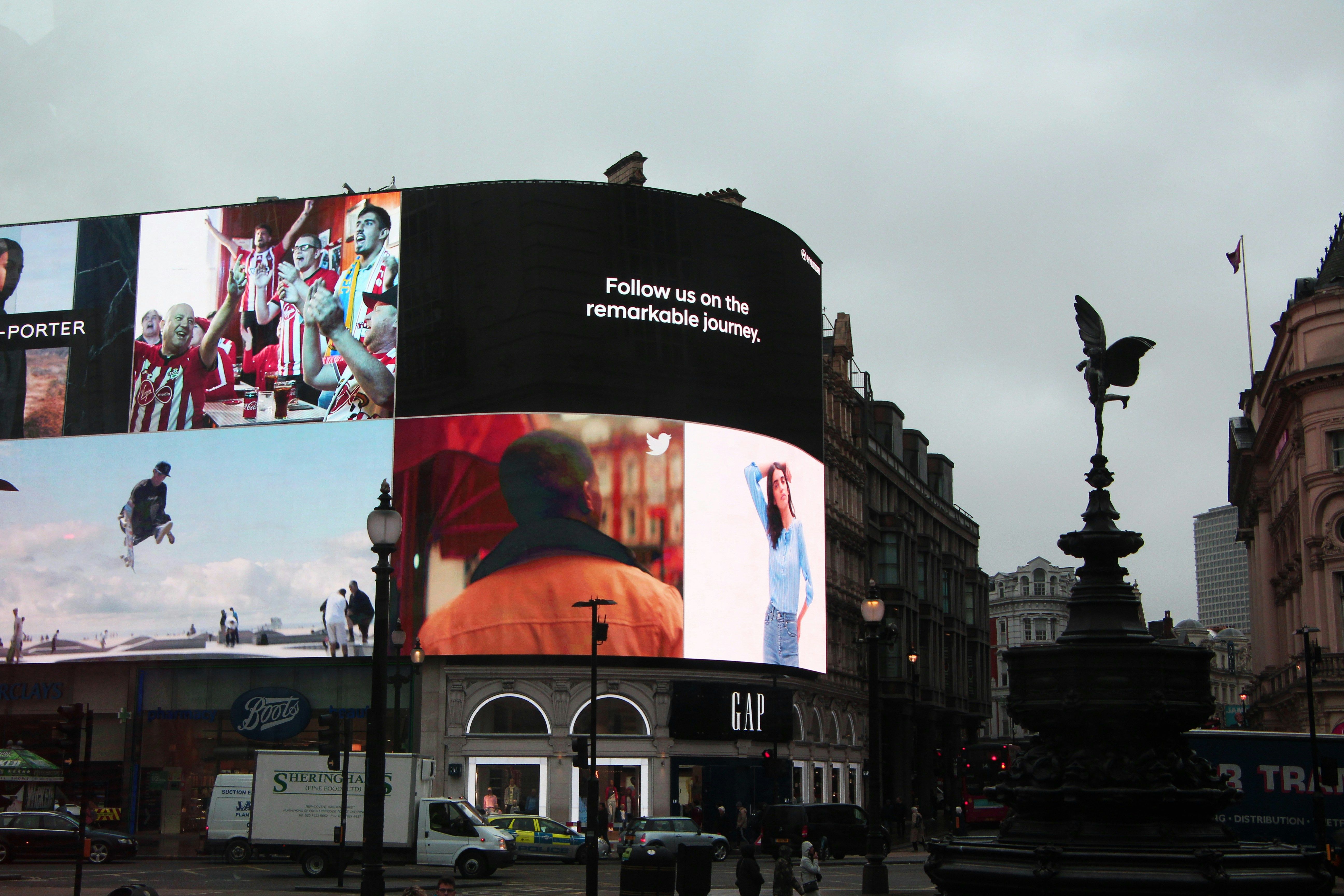
The advertising landscape is continually evolving, with one of the most significant shifts being the rise of programmatic digital out of home (DOOH) advertising. As digital out of home continues to gain attention, the use of programmatic technology to access inventory and launch campaigns, including digital billboards in public environments, has become increasingly relevant.
Why Programmatic DOOH and Digital Billboards are Gaining Traction
The shift towards programmatic DOOH can be attributed to several factors. One of the primary reasons is the move towards omni-channel marketing. Agencies are pushing more dollars through their DSP partners, which streamlines budgets and teams, making the process more efficient. This approach not only simplifies the buying process but also offers the flexibility needed in today’s unstable economic environment. DOOH ads, with their visual potential on big digital screens and adaptability, further enhance this flexibility.
Programmatic advertising allows for more agile and responsive campaigns. Unlike traditional out of home advertising, which often has long cancellation policies, programmatic DOOH provides the ability to quickly adapt to changing circumstances. This was particularly beneficial during the COVID-19 pandemic when movement patterns changed drastically, and advertisers needed to respond swiftly to these changes.
In a podcast interview on the topic Jason Eckerling noted, “In unstable environments and uncertain economic times, it makes perfect sense to push more and more to programmatic and have the flexibility there. That was one of the biggest benefits of COVID that you saw in the industry was the rise of programmatic due to uncertainty and changing movement patterns.”
The Role of Agencies and Omni-Channel Strategies in the Media Mix

Agencies play a crucial role in the adoption of programmatic DOOH. The drive towards omni-channel marketing is largely influenced by agency economics. Agencies are looking for ways to make their operations more efficient, with less overhead and easier activations. By adopting an omni-channel platform, they can pull all campaign elements together and look at the entire campaign holistically.
Integrating DOOH into the media mix is essential for a comprehensive marketing strategy, as it expands reach beyond online channels and creates a consistent online and offline presence.
Eckerling highlighted the importance of this shift, stating, “As more and more goes omni-channel, they have greater budgets that they move dollars around. CTV is incredibly expensive, and clients need to diversify and find other channels, ultimately benefiting out of home.”
This holistic approach not only benefits the agencies but also their clients. For example, connected TV (CTV) is incredibly expensive, and clients need to diversify their spending across different channels. Programmatic DOOH offers a cost-effective alternative that can complement other digital advertising efforts.
Challenges and Opportunities in Programmatic DOOH with Mobile Location Data

Despite its advantages, programmatic DOOH faces several challenges. One of the main issues is the divide between programmatic teams and traditional out of home teams within agencies. These teams often operate separately, with their own budgets and strategies. Bridging this gap requires a coordinated effort and a clear understanding of how programmatic DOOH fits into the broader advertising strategy.
Moreover, the complexity of the programmatic landscape can be daunting. Digital networks looking to sell their DOOH inventory need to navigate various DSPs and SSPs. Understanding how each agency within a holding company activates programmatic DOOH is essential for developing an effective sales strategy.
Local vs. National Programmatic DOOH

While programmatic DOOH is gaining traction at the national level, its adoption at the local level has been slower. However, there is significant potential for growth in local markets. For instance, tier two and tier three automotive dealers could benefit greatly from targeting local audiences through programmatic DOOH. By leveraging digital screens around their dealerships and competitors, these dealers can create highly targeted and flexible campaigns. Mobile location data plays a crucial role in targeting local audiences effectively by providing insights into audience demographics, movement, and real-time views.
Tim Rowe pointed out, “The average dealer was spending around fifty thousand dollars a month on television, direct mail, Facebook, Google, and email marketing. Zero out of home. It wasn’t until further down the road that I was even exposed to out of home, and that was specifically working with tier three automotive dealers who have really nice healthy budgets.”
The potential for programmatic DOOH at the local level extends beyond automotive. Local businesses across various sectors can use programmatic technology to enhance their advertising efforts and reach specific audiences more effectively.
The Future of Programmatic DOOH

Looking ahead, the future of programmatic DOOH appears promising. Programmatic DOOH can significantly enhance the effectiveness of online ads, particularly in the mobile space, with the potential to increase their effectiveness by 316%. The key to its continued growth will be making measurement and integration with other marketing channels as seamless as possible. As the technology and data capabilities improve, agencies will find it easier to demonstrate the true ROI of programmatic DOOH campaigns.
Additionally, the industry needs to work towards showcasing the combined impact of various advertising channels. By proving that a holistic approach to advertising drives better results, programmatic DOOH can secure a more prominent place in the advertising mix.
Conclusion
In conclusion, programmatic digital out of home advertising represents a significant advancement in the advertising industry. Its ability to offer flexibility, efficiency, and targeted reach makes it an attractive option for both agencies and advertisers. The Outdoor Advertising Association of America has highlighted the effectiveness of combining DOOH with other advertising channels, further emphasizing its impact. As the industry continues to evolve, the adoption of programmatic DOOH is likely to grow, providing new opportunities for innovation and success in the advertising world.